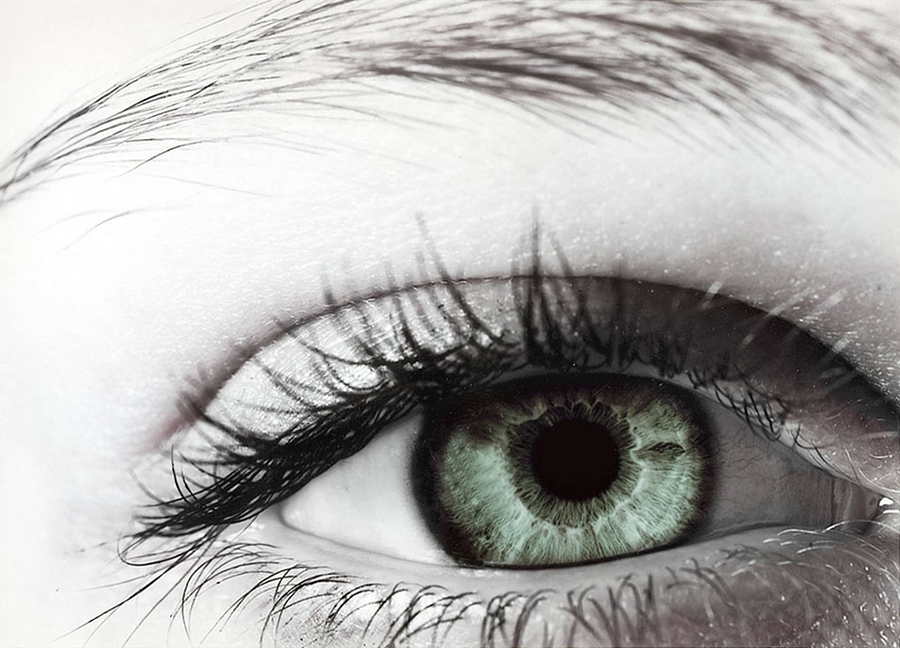4 reasons to get your eye health checked by a specialist
Changes to your sight aren’t the only reason you might need to see an eye specialist.
We all know regular eye tests are important – but changes in your eyesight might not be the only reason for visiting an eye specialist. Anything from pain and irritation to excessively watery eyes could indicate a need to get things checked.
Here, optometrist and leading dry eye specialist Sarah Farrant, of Earlam & Christopher in Taunton, talks us through some of the most common eye health symptoms…

Sarah Farrant
1. Eye pain
It’s not unusual for eyes to ache if you have a bad cold or sinus infection, or haven’t been sleeping well – but pain limited to the eyes can occur too and it’s best to get it checked.
“Pain in the eye can be associated with numerous causes, so it’s important not to ignore it,” says Sarah. “If the pain is mild, but presents regularly as irritation or discomfort, the most likely cause is dry eye disease/syndrome, or blepharitis which causes inflammation of the eyelids. If you’re having day-to-day symptoms of redness, a gritty feeling in the eye and soreness, an optometrist is the best port of call. We can diagnose what’s causing this everyday discomfort and put together a plan to treat and manage the symptoms.”
In more rare cases, eye pain may indicate a more serious underlying cause. “If your eye pain comes on with a vision problem, it could be more serious, and if it’s localised to one eye, it could be even more serious still. A condition called optic neuritis can cause pain when you look around and usually lasts for a couple of days at a time. This can be associated with MS and usually presents with vision disturbances, like a change in how you perceive colours and blurred vision. It usually affects one eye at a time, though this isn’t always the case, so it’s important to get this checked by a GP.”

Sore eyes?
Sarah notes that while talking to your GP is important, they’re “not eye specialists and their ability to diagnose eye problems is also limited by the equipment they have available”. So it’s a good idea to head to the optician’s first – you can always ask them whether they think it’s a good idea to see your GP, and they might advise you to follow up with them anyway to get things investigated further.
“Many areas around the country operate NHS funded eye clinics at local optometry practices which are dedicated to recent onset eye problems, such as new floaters or eye pain. These clinics can look for everything from mild trauma like scratches of the surface of the eye from foreign bodies, to retinal detachments at the back of the eye.”

An eye specialist will have all the right equipment for doing tests
And any sudden, severe eye pain and vision changes? Head to hospital. “While these clinics are great for recent discomfort, if the eye pain presents rapidly or feels extreme, A&E may be the best place to go,” says Sarah. “If you’re unsure, your local opticians practice can probably advise you.”
2. Watery, irritated eyes
Despite the name, watery eyes are actually a key symptom of dry eye syndrome – a condition that’s on the rise. “Dry eye disease can manifest in lots of ways, with the most common symptoms being redness, burning or stinging, blurred vision, a gritty sensation or even, paradoxically, excessively watery eyes. A lot of people confuse this with tiredness, so a good way to check is to stare straight ahead at something for as long as possible. If you feel discomfort, or need to blink before 10 seconds is up, it could be dry eye,” says Sarah.

Screen use can be a factor in dry eye disease
“While dry eyes can be a natural sign of ageing, there are also a whole host of environmental factors that can exacerbate the condition, such as cold weather and wind, along with some medications like oral antihistamines, or contact lenses. It’s also becoming more common among younger people due to the time we spend on computers and screens (when we’re concentrating we blink less, meaning the hydrating tears on the surface of the eye evaporate before we can replace them).
“If symptoms start to interfere with your daily life or cause regular discomfort, see an optometrist who will be able to help. Many optometrists now offer a specialist service called Tear Clinic (tearclinic.com), specifically to treat dry eyes and ocular surface diseases.
“There is no cure for dry eye, but luckily there are lots of things we can do to manage it effectively and improve symptoms, such as preservative-free eye drops,” Sarah adds, noting that dry eye can sometimes be associated with underlying conditions. “If your dry eye is chronic and presents with other dryness symptoms, like dry mouth and skin, see your GP who can look for Sjögren’s syndrome, an autoimmune disease which can be managed with a tailored treatment plan.”
Try the 20:20:20 rule while you’re using the computer; every 20 mins, look at something 20 feet away for 20 seconds. https://t.co/RqK3RL9Ezy pic.twitter.com/o8xtx0RHXa
— Earlam&Christopher (@EarlamandChris) November 8, 2016
3. Bloodshot eyes
Hangovers and sleepless nights aside, are bloodshot eyes a cause for concern? “Bloodshot eyes can be a normal sign of ageing or caused by eye fatigue, contact lens wear, allergies, computer vision syndrome or dry eye disease, all of which an optometrist can help with,” says Sarah.
“If the redness is significant, it could be a sign of something more serious so shouldn’t be ignored, especially if it’s uncomfortable. Some of the most common culprits are infections like conjunctivitis. Iritis is inflammation of the iris and causes pain, light sensitivity and blurred vision. Conditions like arthritis in other parts of the body have been known to lead to iritis. If you have a particular infection or a long-term condition that means you are susceptible to eye problems, you should see your GP who may then refer you to an eye specialist who can take a closer look at your eyes and check if they are involved.
“Red eyes can also be indicative of serious issues such as corneal ulcers or ocular herpes, which can cause scarring on the eye,” she adds. “So if you’re worried about your bloodshot eyes, make an appointment with your optometrist.”
Are your habits increasing your chances of poor eye health? Try the eye health calculator! https://t.co/hGaBWJYhxm #EyeWeek #VisionMatters pic.twitter.com/zY0TpYSrNl
— Earlam&Christopher (@EarlamandChris) September 21, 2017
4. Temporary visual disturbances
Strange, short-term changes in vision – possibly including partial or complete blindness for a brief period – might be due to ocular/retinal migraine, which can be very distressing. “One in five people that suffer with migraines experience ocular migraines, so they are fairly common and usually cause vision problems in both eyes simultaneously,” says Sarah.
“We often hear people describing shimmering effects, zigzag movements and coloured lights. These episodes can last up to half an hour and they usually subside by themselves, the best thing to do is just rest until it’s better.”

Ocular migraines can occur with or without headaches
However, it’s important to get symptoms properly checked. “Ocular migraines aren’t always associated with a headache, so they can be difficult to recognise if you’re not used to them. If you’re not sure whether it is a migraine, you should seek advice from your GP or optometrist who can check your eyes for other potential issues, as similar symptoms can also be caused by mini strokes, or a Transient Ischemic Attack (TIA), and it’s important to catch these early.”
The Press Association
Latest posts by The Press Association (see all)
- World Penguin Day: Test your knowledge with our penguin-themed quiz - April 23, 2024
- Kate’s new photo of Louis released to celebrate prince’s sixth birthday - April 23, 2024
- Alan Titchmarsh: Slugs are never going to be my friends - April 23, 2024
- Prince Louis celebrates sixth birthday - April 23, 2024
- Special episode of Planet Earth III to be narrated by schoolchildren - April 22, 2024






















